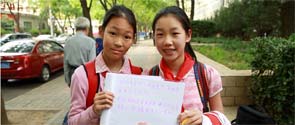Editor's Note: Keywords to Understand China: the Belt and Road Initiative is a selection of "China Keywords" entries included in an eponymous multilingual platform to help readers better understand China's B&R Initiative. It is one of the major projects implemented by the China International Publishing Group and the China Academy of Translation.
Policy Coordination
Policy coordination is key to effective implementation of the Belt and Road Initiative. In order to expand shared interests, enhance mutual trust, and build consensus on further cooperation, it is important for the countries along the Belt and Road to seek common ground while shelving differences, and increase intergovernmental communication on macroeconomic policy and development strategies so as to better align their national priorities with regional planning needs and common goals.
Cooperation related issues and challenges should be dealt with through consultation, and policy support is needed to promote a pragmatic approach to implementing large-scale projects. Joint efforts have to be made to harmonize strategies, decision-making processes, policies and rules, so as to build a stronger community with a shared a future.
Connectivity
Connectivity is a priority area under the Belt and Road Initiative. While respect for each other's sovereignty and security concerns is indispensable, a closer alignment of infrastructure development planning and technical standards is called for between the countries along the Belt and Road.
Such a move would facilitate the construction of key international arteries, so as to build an infrastructure network that not only links all the subregions in Asia, but also extends out to Europe and Africa.
Also essential is the need to promote a green and low-carbon approach to building and operating infrastructure, taking into full account any potential trigger for climate change.
Rather than confined to the traditional sense of connection by means of highways, railways, aviation routes, shipping routes and pipelines, the new notion of connectivity is understood to cover such areas as power supplies, telecommunications, postal services, border controls, customs, quality controls, and integrated planning as well.
Efforts to boost connectivity aim to link a vibrant East Asia with the developed economies in Western Europe, covering a host of other countries in between with huge potential for economic development. With interests interlocked, all countries concerned are encouraged to seek cooperation in pursuit of shared prosperity.
Unimpeded Trade
Removing barriers to trade with the aim of unleashing the potential for greater cooperation between countries involved is a major task in building the Belt and Road.
Major measures the countries and regions along the Belt and Road could take include:
- Creating mechanisms to facilitate free trade and the removal of investment and trade barriers.
- Opening free trade areas to create a business-friendly environment at the regional and national levels and unleash the potential for cooperation;
- Improving the transparency of technical measures and reduce non-tariff barriers in order to liberalize and facilitate trade;
- Expanding trading areas, improving trade structures, and exploring new growth areas in order to attain trade balance;
- Integrating investment and trade, and boosting trade with investment;
- Incorporating a focus on cooperation in ecological conservation, protecting bio-diversity and addressing climate change into investment and trade strategies in a joint effort to build a Silk Road to green development;
- Optimizing industry, value, supply and service chains, and promoting economic complementarity, interaction and mutual assistance between countries and regions concerned;
- Exploring new development opportunities, and creating an open economic environment that encourages the search for win-win solutions, respects diversity, enhances security and promotes efficiency.
Financial Integration
Financial integration is an important support for the Belt and Road Initiative. Key measures the countries concerned could take to foster financial integration include:
- Increasing financial cooperation to ensure currency stability, build a sound framework for investment, financing, and credit services in Asia, and expand the availability of public financial products;
- Strengthening the role of the Asian Infrastructure Investment Bank, the BRICS New Development Bank, the Silk Road Fund, and sovereign wealth funds of the countries concerned in funding key projects;
- Expanding local currency settlement for bilateral trade, and promoting the opening up and development of bond markets in Asia in support of RMB bond issuance in China by governments and creditworthy companies and financial institutions of other Belt and Road countries, and the issuance of bonds denominated in the RMB or foreign currencies outside China by Chinese companies and financial institutions;
- Facilitating interbank and multilateral cooperation, especially in issuing syndicated loans and bank credit, and encouraging equity funds, other companies and individuals to invest in key projects;
- Enhancing cooperation on financial regulation, improving risk response and crisis management mechanisms, and building a regional financial risk early-warning system, to address any cross-border risks and crises and promote further economic and trade cooperation.
Strengthened People-to-people Ties
People-to-people ties provide an anchor for the Belt and Road Initiative. Without such an anchor, the strategic goal of connecting diverse cultures and different countries would be out of reach.
Increased interaction and mutual understanding, greater awareness of potential benefits from expanded cooperation, and more participation are therefore indispensable to the initiative's success.
To this end, the countries along the Belt and Road are encouraged to step up friendly cooperation in the Silk Road tradition by promoting extensive cultural, academic, scientific, media, and other people-to-people exchanges, including those between youths, women, and volunteer groups, so as to consolidate public support for bilateral and multilateral cooperation.
Specific measures include: Exchanges could be pursued between non-governmental organizations; the role of political parties and parliaments in promoting bilateral and multilateral interaction should be strengthened; collaboration between think tanks is also encouraged in conducting research and sponsoring forums on issues of common concern; and dialogues between civilizations and religions could be fostered through increased exchanges between cultural and media organizations.
(The opinions expressed here do not necessarily reflect the opinions of Panview or CCTV.com)

Panview offers a new window of understanding the world as well as China through the views, opinions, and analysis of experts. We also welcome outside submissions, so feel free to send in your own editorials to "globalopinion@vip.cntv.cn" for consideration.















